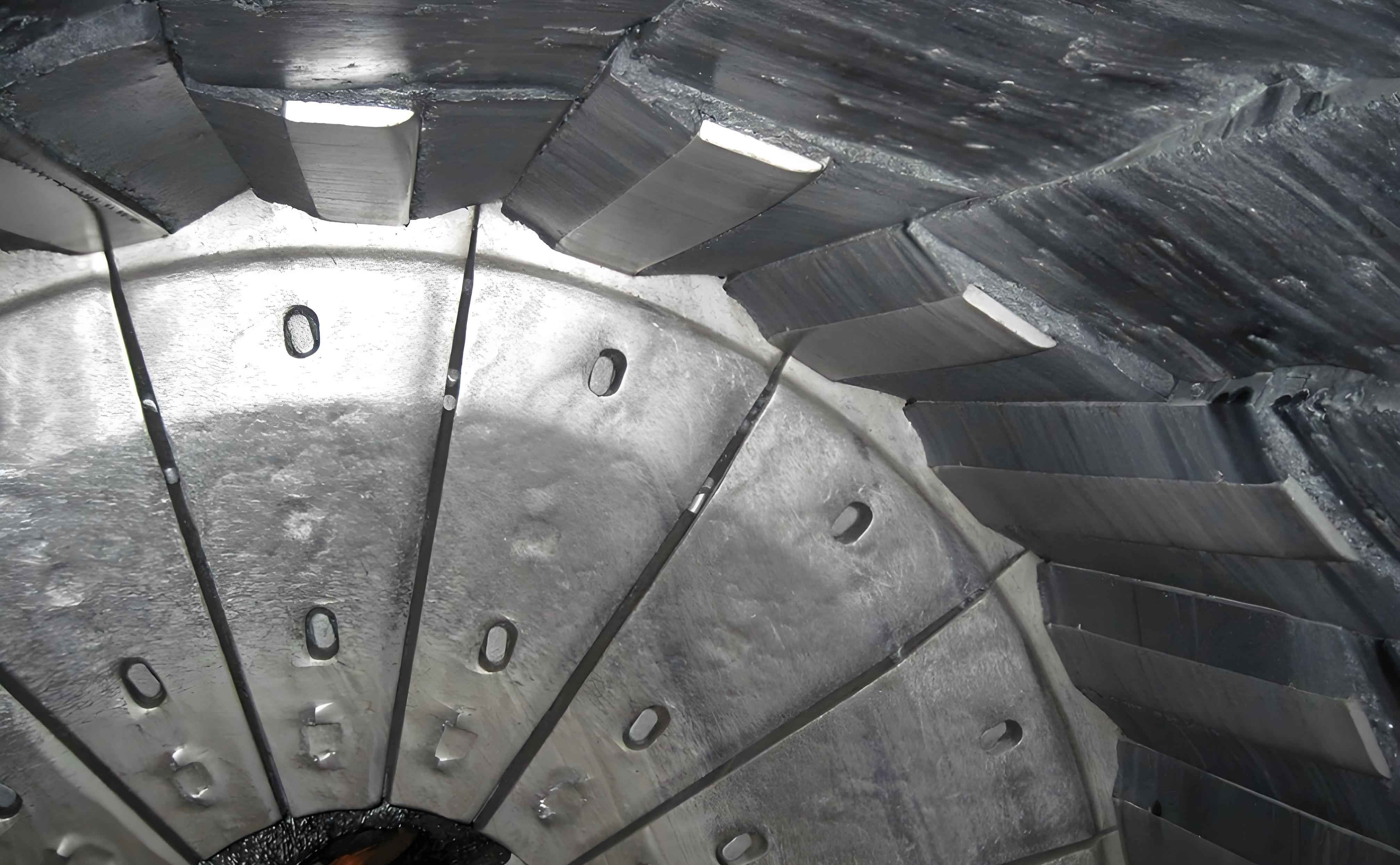Abstract
This study investigates the impact of heat treatment processes—specifically quenching and tempering temperatures—on the microstructure and mechanical properties of chromium-molybdenum (Cr-Mo) steel lining plates used in semi-autogenous grinding (SAG) mill cylinders. Frequent maintenance and replacement of lining plates due to wear and tear motivated this research. Through systematic experimentation, we optimized heat treatment parameters to enhance hardness and impact toughness. Results demonstrate that quenching at 920°C followed by tempering at 560°C yields the best comprehensive performance: a hardness of 45 HRC and impact toughness exceeding 45 J/cm². Microstructural analysis reveals refined martensitic structures and tempered sorbite, which contribute to improved durability. This work provides actionable insights for extending the service life of semi-autogenous grinding mill lining plates.

Keywords: lining plate, heat treatment, quenching, tempering, microstructure, mechanical properties
1. Introduction
Lining plates are critical components in semi-autogenous grinding mills, protecting the cylinder from abrasion and impact during ore grinding. However, their frequent failure under harsh operational conditions leads to costly downtime. Traditional materials like high-manganese steel or high-chromium cast iron face limitations: poor wear resistance under low-to-medium stress (high-manganese steel) or brittleness and high costs (high-chromium cast iron). Low/medium-alloy steels, particularly Cr-Mo steels, have emerged as promising alternatives due to their balanced strength and toughness.
Heat treatment—quenching and tempering—plays a pivotal role in tailoring the microstructure and properties of Cr-Mo steel lining plates. While prior studies explored tempering effects on sorbite formation or martensite decomposition, the optimal combination of quenching and tempering temperatures remains underexplored. This study systematically evaluates how varying heat treatment parameters influence:
- Microstructural evolution (martensite refinement, carbide precipitation).
- Mechanical performance (hardness, impact toughness).
- Fracture mechanisms (cleavage vs. ductile failure).
By identifying the optimal heat treatment regime, we aim to prolong the lifespan of semi-autogenous grinding mill lining plates.
2. Materials and Experimental Methods
2.1 Material Preparation
The lining plate material was a Cr-Mo steel with the chemical composition listed in Table 1. Four 200 mm × 200 mm × 200 mm ingots were prepared via medium-frequency induction melting and lost-foam casting. Samples were extracted from the central region of each ingot to ensure homogeneity.
Table 1: Chemical Composition of Cr-Mo Steel (wt%)
| C | Si | Mn | P | S | Cr | Ni | Mo | Cu | Ti | V | Fe |
|---|---|---|---|---|---|---|---|---|---|---|---|
| 0.65 | 0.50 | 0.80 | 0.03 | 0.03 | 2.00 | 0.40 | 0.35 | 0.15 | 0.05 | 0.05 | Bal. |
2.2 Heat Treatment Processes
Quenching: Samples were heated to 900°C, 920°C, or 940°C in a box furnace (4 h heating, 2 h holding), followed by rapid cooling in a 1:7 water-based quenching medium.
Tempering: Quenched samples were tempered at 480°C, 520°C, 560°C, or 600°C (2 h heating, 3 h holding), then air-cooled.
2.3 Testing Methods
- Hardness: Measured using an HRS-150 Rockwell hardness tester (7 points/sample, outliers removed).
- Impact Toughness: Evaluated via JB-300B pendulum impact tester (10 mm × 10 mm × 55 mm un-notched specimens, 150 J total energy).
- Microstructure: Observed under optical microscopy (OM) and field-emission scanning electron microscopy (FE-SEM) after etching with 4% nitric acid.
- Fractography: Impact fracture surfaces analyzed via FE-SEM to determine failure mechanisms.
3. Results and Discussion
3.1 Effect of Quenching Temperature
3.1.1 Microstructural Evolution
Compares microstructures under different quenching temperatures:
- 900°C: Coarse martensite with unevenly distributed retained austenite.
- 920°C: Fine, homogeneous martensite; minimal retained austenite.
- 940°C: Coarsened grains due to austenite growth.
Quenching at 920°C optimally refines martensite, enhancing mechanical properties.
3.1.2 Mechanical Properties
Table 2 summarizes hardness and impact toughness data.
Table 2: Mechanical Properties at Different Quenching Temperatures
| Quenching Temp. (°C) | Hardness (HRC) | Impact Toughness (J/cm²) |
|---|---|---|
| 900 | 62.3 | 4.8 |
| 920 | 65.5 | 5.3 |
| 940 | 60.1 | 4.1 |
At 920°C, peak hardness (65.5 HRC) and toughness (5.3 J/cm²) are achieved. Excessive temperatures (940°C) cause grain coarsening, degrading performance.
3.2 Effect of Tempering Temperature
3.2.1 Microstructural Evolution
Samples quenched at 920°C were tempered at varying temperatures:
- 480°C: Tempered martensite with fine carbides.
- 560°C: Fully developed tempered sorbite (ferrite + spheroidized carbides).
- 600°C: Coarse carbides and reduced matrix strength.
Tempering at 560°C produces a balanced microstructure, optimizing strength and ductility.
3.2.2 Mechanical Properties
Table 3 shows the effect of tempering temperature.
Table 3: Mechanical Properties at Different Tempering Temperatures
| Tempering Temp. (°C) | Hardness (HRC) | Impact Toughness (J/cm²) |
|---|---|---|
| 480 | 52.0 | 14.8 |
| 520 | 48.5 | 32.1 |
| 560 | 45.0 | 45.2 |
| 600 | 40.3 | 34.5 |
Hardness decreases with tempering temperature due to martensite decomposition and carbide coarsening. Impact toughness peaks at 45.2 J/cm² (560°C), attributed to tempered sorbite’s ductile matrix.
3.3 Optimal Heat Treatment Process
Combining 920°C quenching + 560°C tempering yields:
- Microstructure: Fine tempered sorbite with uniform carbide dispersion.
- Mechanical Properties:
- Hardness: 45 HRC (sufficient for wear resistance).
- Impact Toughness: >45 J/cm² (resists crack propagation).
This regime balances strength and toughness, ideal for lining plates in high-stress environments.
3.4 Fracture Mechanism Analysis
Compares fracture surfaces:
- 480°C tempering: Quasi-cleavage fracture with secondary-phase particles promoting crack initiation.
- 560°C tempering: Ductile dimples and tear ridges; absence of brittle phases.
Higher tempering temperatures eliminate brittle inclusions, enhancing toughness.
4. Conclusion
- Quenching at 920°C refines martensite, minimizing retained austenite and maximizing hardness (65.5 HRC).
- Tempering at 560°C transforms martensite into tempered sorbite, achieving optimal toughness (45.2 J/cm²) while retaining adequate hardness (45 HRC).
- The 920°C + 560°C heat treatment regime significantly enhances the service life of Cr-Mo steel lining plates, reducing maintenance frequency in semi-autogenous grinding mills.
